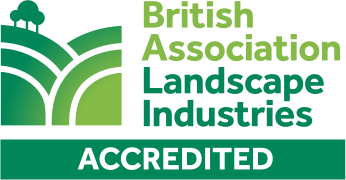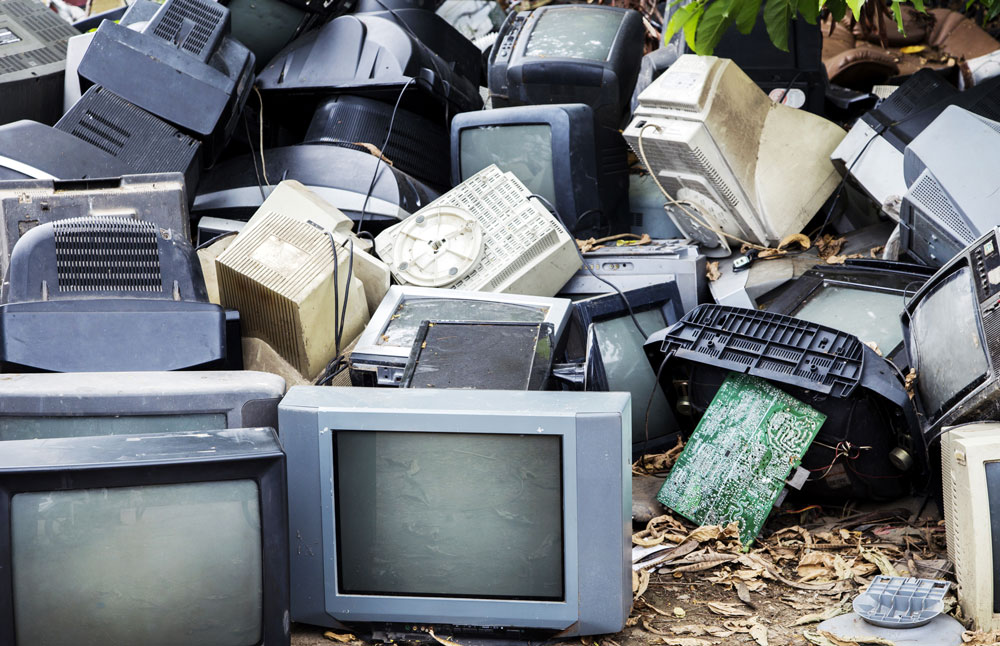In 2014, numerous UK companies raised the issue of leaded glass from cathode ray tube (CRT) screens being exported to the Netherlands, where it was being used by a company called ‘A Jansen BV’ to make concrete blocks which were then sold back to the UK in their thousands.
Calling on the Environment Agency to intervene, the companies – which included Elite Precast Concrete – were highly critical, stating this was a practice which fell below the standards they were expected to adhere to and that the quality of the newly imported blocks was substandard compared to their own. The Environment Agency came under scrutiny to act but claimed they did not need to step in as the process had been ‘properly regulated’ by the Dutch authorities.
The material was no longer deemed to be waste at the point where it was being shipped back into the UK, because it had already been used within the interlocking concrete blocks, and as such was no longer subject to waste regulations.
Later that year, it was reported the Environment Agency had asked for more evidence to reassure them of the quality of the product and also had restricted import to be done under waste controls.
But it wasn’t until December 2017 that Jansen were forced to stop accepting material from suppliers in the UK and across Europe and the US following the implementation of a new Dutch Government waste management plan, which prevents the use of CRT glass in concrete products. Instead of being used in interlocking blocks, the company began redirecting non-leaded glass for use in building material in the ceramic industry and leaded glass as a capping layer on landfill.
Impact and concerns
There are thousands of interlocking blocks within the UK which are known to contain reused CRT glass. While it is known they were imported into Britain, there is no tracking system which would determine where these blocks are now situated and, while there has been coverage of the issue within the industry press, there has been no wide scale warning issued to raise awareness among those who may have purchased the blocks directly from the company, or may have come into possession of them later down the line if they were sold on. While the company maintains the blocks were manufactured to high standards, because they were not imported as waste materials, they have no waste transfer notes associated with them which means when they come to be disposed of, there will be no record of their composition and the fact they contain CRT glass.
While this particular company’s practices were highlighted and brought to the attention of the media, there are multiple other instances where companies have been permitted to use waste or hazardous material within concrete blocks because of the lack of industry regulation. This enables them to avoid disclosing the content of the blocks when they sell them, and because there is no legal requirement to test the strength and durability of concrete – only guidelines which suggest the minimum values – blocks are in circulation which undoubtedly do not have the same strength as those comprised only of primary or secondary aggregates.
There are dual concerns: blocks which are not of the highest standard represent both a financial risk and a health and safety one – these products simply cannot be guaranteed to last the same length of time as those using aggregates from a known and completely safe source. And, either the products cannot be recycled because it is known they are already from a recycled source or, in the case of hazardous waste, when that product comes to the end of its life, it is likely to be crushed and that hazardous material would then be released into the environment unknowingly.
The risk to the reputation of the industry, the reliability of the products which are being sold, the environment and of course to the safety of those who are in close contact with the blocks once they
are placed in situ is so great, regulations must be tightened and enforced to ensure this practice does not continue into the future.
“With such extensive use of the material, discovery of any shortcoming or problem associated with concrete or reinforced concrete structures will become a matter of considerable public concern – both from a safety perspective and associated costs of rectification.”
The future of the industry: enforcement and eradication of hazardous waste
The Holland case study – and the knowledge other companies, both those based within the UK and those who import into Britain, are employing similar practices – raises a series of important points for consideration to secure high standards within the concrete industry going forward.
Where are the Dutch blocks now?
Short of the immediate destruction of every single interlocking concrete block, which would clearly be impractical and an entirely over the top reaction to the actions of a certain number of companies in what otherwise is a very ethical industry, there is little which can be done to comprehensively tackle the issue of the thousands of blocks containing hazardous or unknown materials which have already been distributed across the UK. What should be issued however is a widespread notice which reaches as many potential customers as possible to educate them about the possibility of blocks containing CRT glass or other hazardous materials. Customers who may have purchased the blocks and the waste plants who will receive and be charged with disposing of the blocks at the end of their life need to be aware of the potential harm the waste within these products could do. Where possible the blocks should be recalled, but at the very least those who may have bought or will be coming into contact with them should be aware of the risks.
Stopping the use of hazardous materials
More must be done to stop the use of hazardous materials within structural concrete – lessons can be learned from the Government plan put in place in Holland. A thorough investigation must be undertaken by the Environment Agency to gauge the extent of the problem, and the reclassification of hazardous waste once it has been reused within a new product should not be allowed to happen. Allowing, or doing nothing to stop, the use of such material gives the impression this is an acceptable practice and keeps the door open for more companies to do so in the future. While ethical and legitimate companies will continue to aim for best practice and comply with guidelines, clear rules (and sanctions when those rules are not complied with) must be applied to increase the chance of catching any companies with unscrupulous practices.
Better regulation of the use of recycled materials
With a constant push for the use of more recycled materials within construction, and current regulations making no distinction between the types of aggregates used within concrete, it is no wonder there are blocks out there which simply do not meet the high standards which are expected of building materials. The acceptable uses of recycled aggregates and – more importantly – the applications where solely primary or secondary aggregates should be used, need to be clarified so manufacturers have a clear set of guidelines to work from. A lack of knowledge, or an ability to work outside the remit of best practice within the industry while still operating perfectly legally, should be clamped down on in the future.
Research
There is a distinct lack of research about two important aspects of using waste within concrete blocks: firstly, the impact that the use of such materials has on the block’s overall performance, including its strength and durability – and as such its suitability to be used within a structural project. Secondly, what happens to the waste at the end of the block’s life and the subsequent impact this may have on the environment.
Undertaking research into the use of recycled aggregates within concrete – and specifically within interlocking blocks – would enable the relevant authorities to make sound decisions about how to regulate the industry going forward. Publicly-available research would also empower customers by giving them the opportunity to better understand the consequences of their choices when it comes to purchasing concrete and the contents within it – knowledge they don’t yet have access to. It would in-turn increase transparency and standards within the industry by promoting best practice and supporting the companies who choose not to use recycled materials; educating new companies who wish to be conscientious and understand thoroughly which materials they should be using and why; and simultaneously eradicating companies who currently use materials of a dubious or unknown source to claim ignorance when questioned about their practices.
The lack of widely-distributed evidence which could be used to drive up standards within the industry and guide future tightening up and enforcement of regulations gives a green light for the problem to worsen over coming years. While many within the industry have anecdotal evidence of the issue, without the backing of properly conducted research this is simply not enough to affect large-scale change and the long-overdue updating of regulations.
If the relevant authorities continue to essentially ignore the problem by not researching it thoroughly, this means there is no real knowledge of exactly how widespread the issue is, and how severe the repercussions could be of using this recycled waste – both in terms of the block’s performance and structural safety, and what happens at the end of its life. The longer this situation continues, the more blocks are being made which include encapsulated waste either imported or circulated around the UK.
Enforcement of existing rules
While there are regulations currently in place, they simply act as guidance for manufacturers wishing to comply with best practice. They are not legally enforceable and those who do not comply with them (for example by using waste materials which are a by-product of another part of their company rather than having to purchase primary or secondary aggregates) may be able to reduce their manufacturing costs, either unfairly making more profit than their competitors or passing these savings on to their customers thus being able to offer lower prices to customers who may not realise the inconsistency in quality between their products and those manufactured by other companies.
While there would be a cost and time implication involved with the introduction of more stringent enforcement of the existing rules surrounding the type of testing which should take place before concrete products are sold or used, this has to be balanced with the significant advantages environmentally (when it comes to products being recycled at the end of their life), as well as to the overall quality of products and to safety. Allowing unregulated blocks to be imported or manufactured within the UK is a ticking time bomb and an issue which should be addressed now, rather than following a disaster which becomes more likely the longer potentially substandard blocks are continued to be allowed to be made.
Use of the law
There is a strong evidential case to be made that the quality of interlocking blocks and other structural concrete products should be regulated by law. Refreshing the current guidelines to provide specific advice on recycled aggregates and then making them legally enforceable would mean every manufacturer would have to make concrete of a certain standard, provable through regular testing, to be able to trade within the UK. As well as standardised testing, companies would have to clearly state the exact composition and source of the aggregates within their products. This would regulate the industry, minimise the risks by driving up quality and ensure a level playing field – with companies unable to get ahead by using substandard materials at a lower cost to themselves, or avoiding paying to dispose of their waste by instead using that waste within concrete products. This is of clear benefit to customers, as they will all receive a quality product regardless of which manufacturer they choose, but is also advantageous to the industry as a whole due to the associated increase in standards.
Customer knowledge and awareness
Part of the reason unknown recycled or hazardous materials have been used within concrete blocks up to now is the lack of awareness from customers. While they may choose a company based on factors such as cost or turnaround time, they may be unaware of the difference in quality which can occur as a result of the lack of enforcement of the guidelines. They may be unaware of the regulations surrounding the industry, or they may assume every company abides by those regulations. Regulatory agencies must work together to come up with effective ways of increasing knowledge of the standards expected within the concrete industry, at the same time as tightening up the enforcement aspect of their work.
Conclusion…
Recycling as a general principle is to be applauded, and the more that can be done to educate all manufacturers and customers about the appropriate uses of such materials, the better. However, structural concrete such as interlocking blocks must be subject to the highest quality checks due to the grave implications if the product was to fail, and the environment impact of being unable to recycle the materials at the end of their life in their current form.
More must be done to ensure regulation across the industry, and stop unscrupulous firms making money from risky practices such as encapsulating hazardous waste within concrete blocks. There have already been issues resulting from blocks of dubious quality being distributed across the UK, and the potential for more serious problems to arise the more of these types of blocks are manufactured is high.
Agencies involved in the regulation of the industry must act now to begin a programme of better enforcement of the guidelines, research into the specifics and potential impact, and updating the rules to clarify the appropriate and inappropriate uses of recycled and hazardous waste within concrete.
At Elite Precast we only use high quality concrete that does not contain any recycled materials and all our interlocking blocks are Class A1 Fire Resistant. For more information about any of our products or services please call us on 01952 588 885 or email sales@eliteprecast.co.uk.









